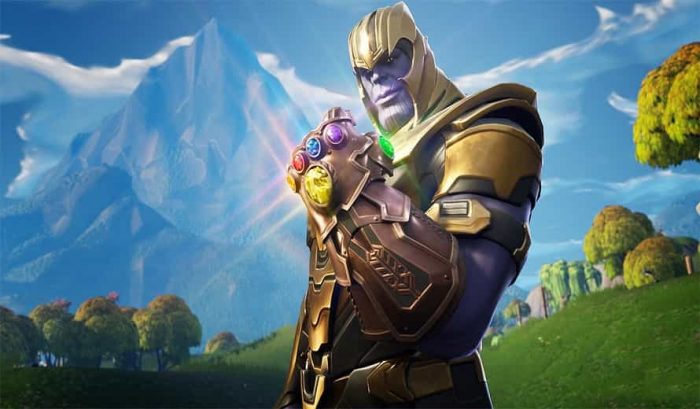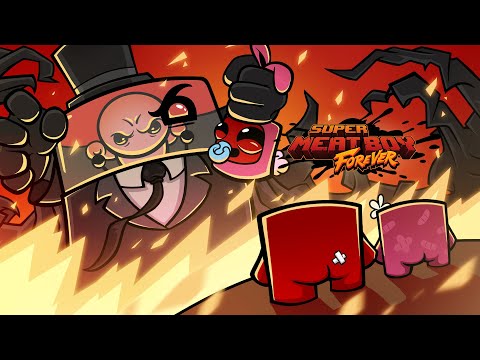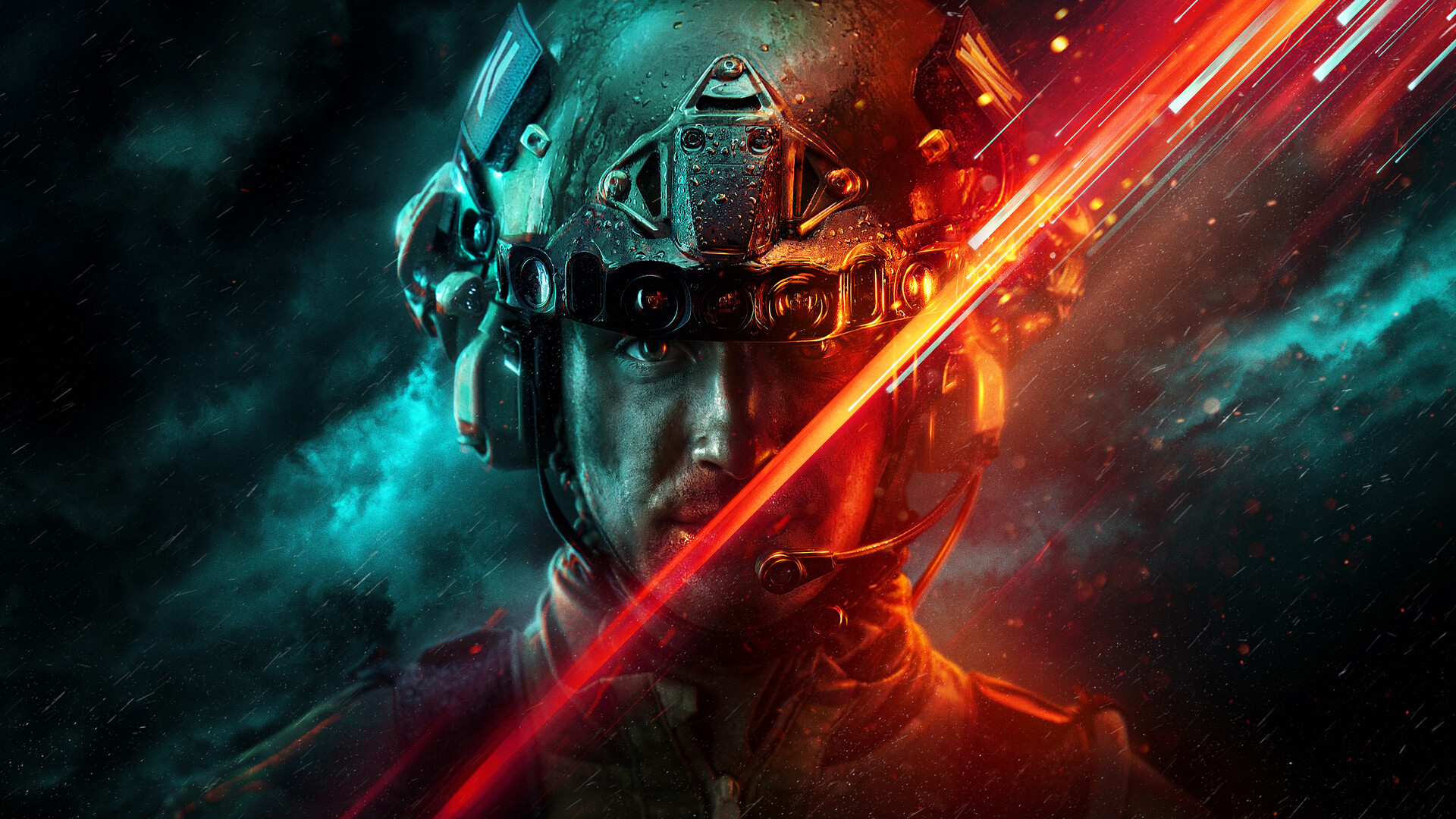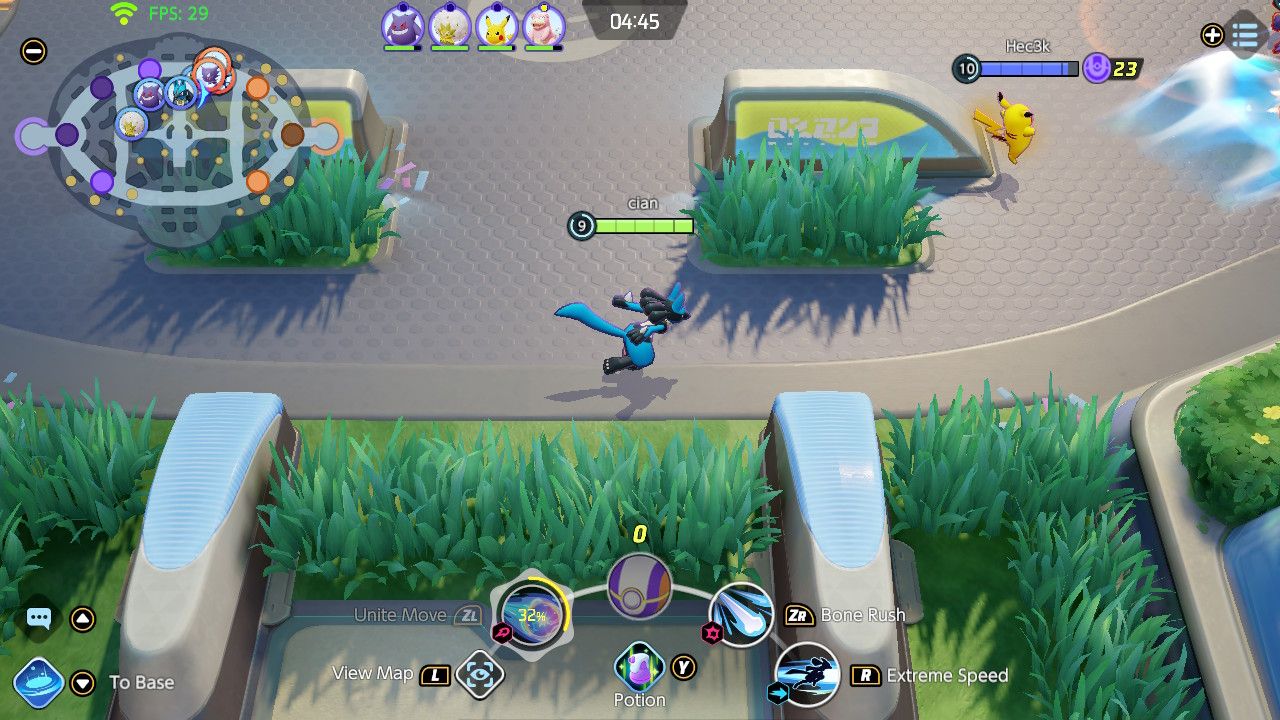
An almighty avian deity descends into the middle of a hazy jungle in a maelstrom of thunder and noise. You might know it as Zapdos, but here, reader, it is something different. This is a bird that must be battered beyond belief so that you can say, ‘Oh, how the turn tables’ to your adversaries after converting a near-devastating defeat into a victory worthy of Arceus, Dialga, and Palkia (as in the gods, geddit?). This is because Pokemon Unite is not like any other Pokemon game, which is both the best and worst thing about it.
I’ve put a lot of time into Pokemon Unite over the last 24 hours, having racked up almost 40 matches across various different game modes. I’m a Lucario main, but I also occasionally mess around with Charizard or Absol if somebody else manages to nick my best boy while I’m not paying attention. I tried Zeraora – who is completely overpowered – but couldn’t get its playstyle down, whereas Gengar, one of my favourite ‘mons of all time, is so bad it’s almost ghastly (eh?). Despite only launching with 20 ‘mons – technically several more, since it’s 20 evolutionary lines – Unite has everything from Crustle to Cramorant, to Cinderace and Charizard. Personally, I think it’s a bit weird that 20 percent of the Pokemon in the game have names beginning with C.
Related: Every Pokemon In Pokemon Unite
Pokemon Unite is a MOBA, or multiplayer online battle arena. If you’re unsure of what that means, think of something like League of Legends or DOTA 2. Two teams of five are placed on a map separated into three distinct lanes, all of which are divided into two halves lined with scoring zones. The aim of the game is to score more points than the other team, but it’s not as simple as that. While Unite is significantly less complex than its influences, you need to know where to go, when to fight, how to escape, and what to do in a countless number of distinct, weird, and unpredictable situations. When you make a smart play, you feel like Pokemon Einstein. When you make an eejit of yourself, though, you feel like Ash Ketchum after he asked Gary Oak if his girlfriend was a Pokemon.
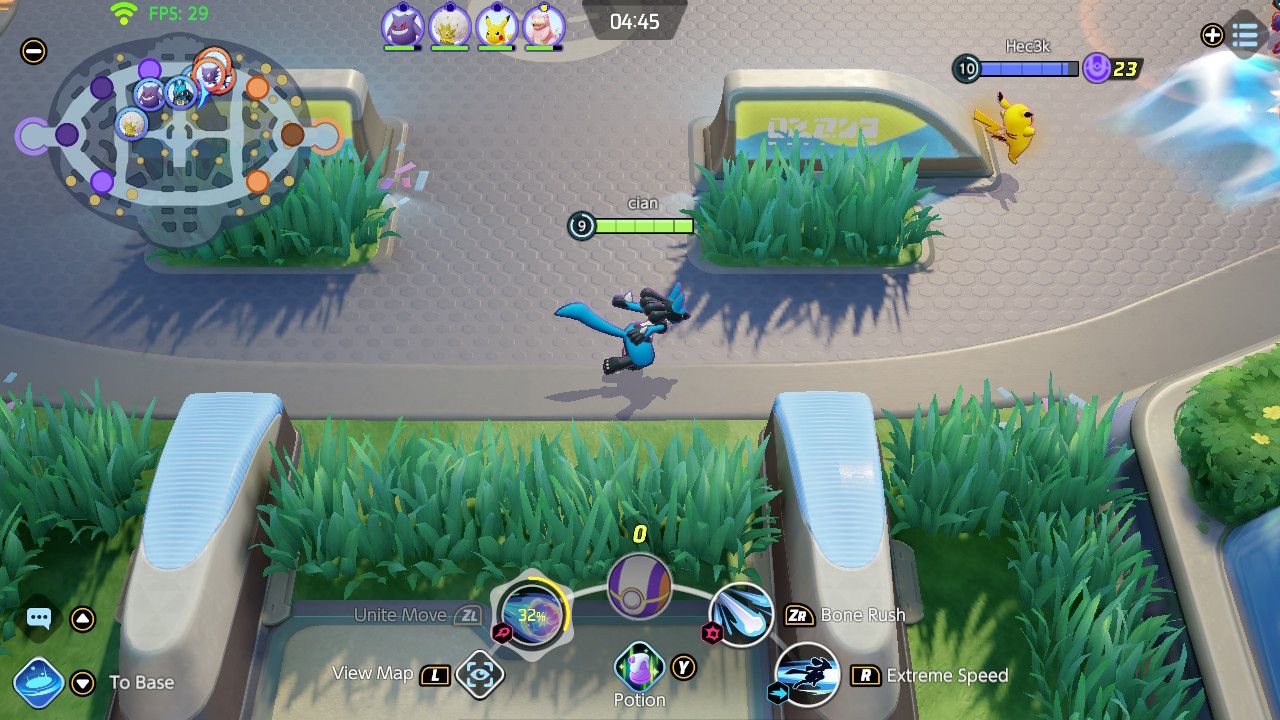
Before I get into what makes Pokemon Unite work, I’d like to state the grievances I have with it so far. While it displays a strong understanding of MOBA design, I’m not sure it fully comprehends the individuality of different Pokemon. There’s a huge amount of homogeneity in the mainline Pokemon series due to the fact battles are, for the most part, almost always the same, but recent entries in the series like Sword & Shield and New Pokemon Snap have introduced new features designed with differences across species in mind – camping, complex behaviours, and the response to human interaction, to name a few.
It would be ridiculous to argue that you should be able to stop for a few Pokemon s’mores in the middle of a MOBA brawl, but that’s not what I’m talking about here. Unite, by definition of its differentiation, leans into what makes Pokemon special by assigning each Pokemon a role. Gengar is a Speedster because it’s fast, but the rest of Gengar’s kit doesn’t make a whole lot of sense. Sure, it can go invisible with its Unite move, but where’s the innovation there? Where’s the consistency with the anime prankster ghost we’ve come to know and love over the last 25 years? Unite is like Mystery Dungeon or Snap in that it has an opportunity to establish coherent identities for each and every Pokemon beyond the restrictions of the mainline formula. Lucario is pretty good, as are ‘mons like Alolan Ninetales and Crustle. Gengar, though? Gengar is rubbish. Snorlax’s whole homage to its origins is just “high health, can sleep,” whereas series favourites like Garchomp, Greninja, and Venusaur are great to play as, but just a bit boring.
It’s a minor complaint for people who aren’t particularly into Pokemon, but I’d wager it will be a major point of contention as Unite ages. There are sure to be balance changes – again, Zeraora is broken – but as it stands, Pokemon Unite only properly gets half of its hybrid Pokemon/MOBA structure.
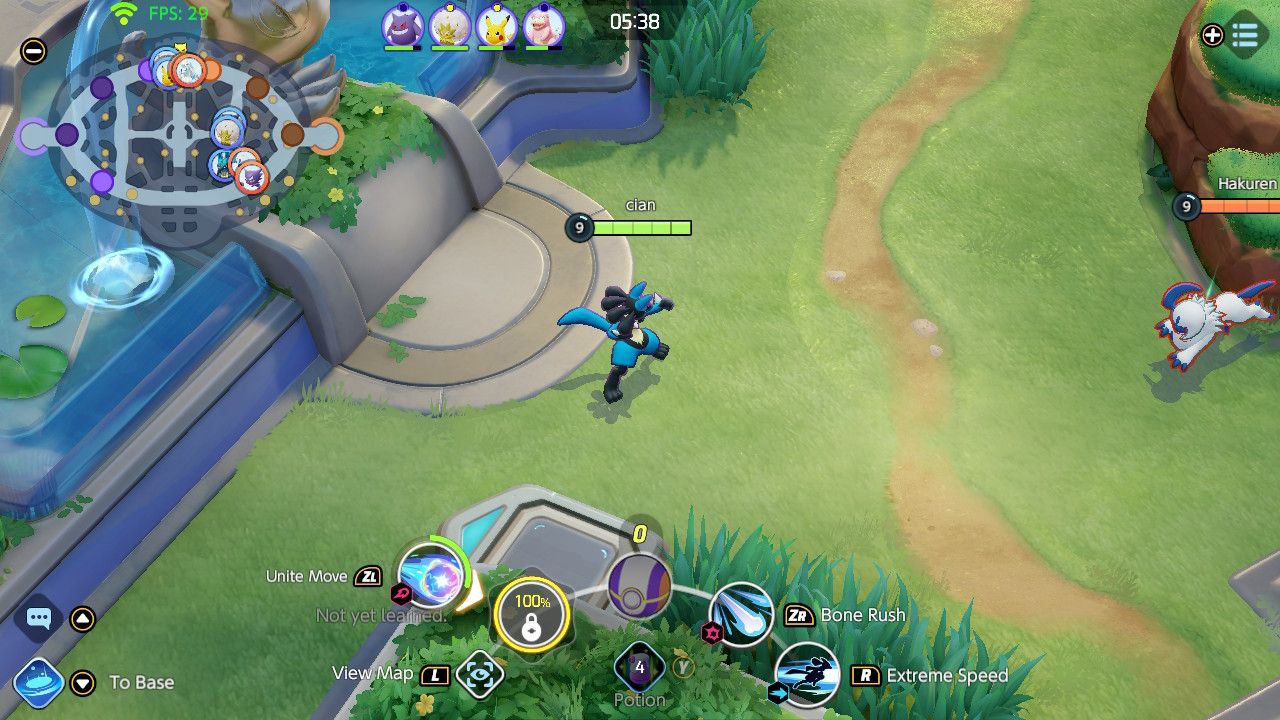
The other half, though, is outstanding. Matches are only ten minutes long and there’s no gimmick designed to extend that runtime. Every game is hectic – team fights erupt 30 seconds in and the scramble for Zapdos at the end of each game is frenetic in a way that supersedes any Pokemon battle formula before it. The concept of Pokemon – magical creatures with unique types, abilities, movepools, and stats – lends itself spectacularly well to a genre as refined as MOBA, while the contextual crossover of implementing ‘mons like Bouffalant and Ludicolo as Jungle buffers is excellent. The Jungle itself is the best thing about Unite – sure, the lanes are functional and lined with some weak wild ‘mons to farm experience from, but this is a game that shines in the places you’re not really supposed to be.
This is because Unite, despite being regimented into strict movesets and strategies, is at its best when it is completely chaotic. Your job in each match depends on your role – Speedsters skulk through the Jungle while Attackers and Defenders rip up the top and bottom lanes – but precisely defined roles almost always give way to unpredictable mayhem.
Pokemon evolve as you progress throughout the match, so it’s useful to play it safe at the beginning, taking out low level wild ‘mons until you evolve and learn a new move. Sometimes, though, you’ll notice an enemy team member has gotten a bit too ambitious – a bit greedy, even. One step into your territory and you’re off like a Snipe Shot, Absol Feinting its way through rough shrubbery to land a pinpoint shot on a stranded Alolan Vulpix. Except it’s not stranded and all of a sudden Slowbro is on you, its enormous health pool and proximity to its own zone converting a war of attrition into a one-sided stomping. Just as you’re about to faint, the unlikely combo of Pikachu and Cramorant zoom out of the woodwork, shooting bolts and barracudas at the enemy team as part of a pandemonium of projectiles that should – but don’t – make the frame rate tank. I’m not going to go into this in any great detail, but for what it’s worth, the frame rate and all other technical aspects of Pokemon Unite have been flawless so far, especially considering the game’s status as a Switch and mobile exclusive.
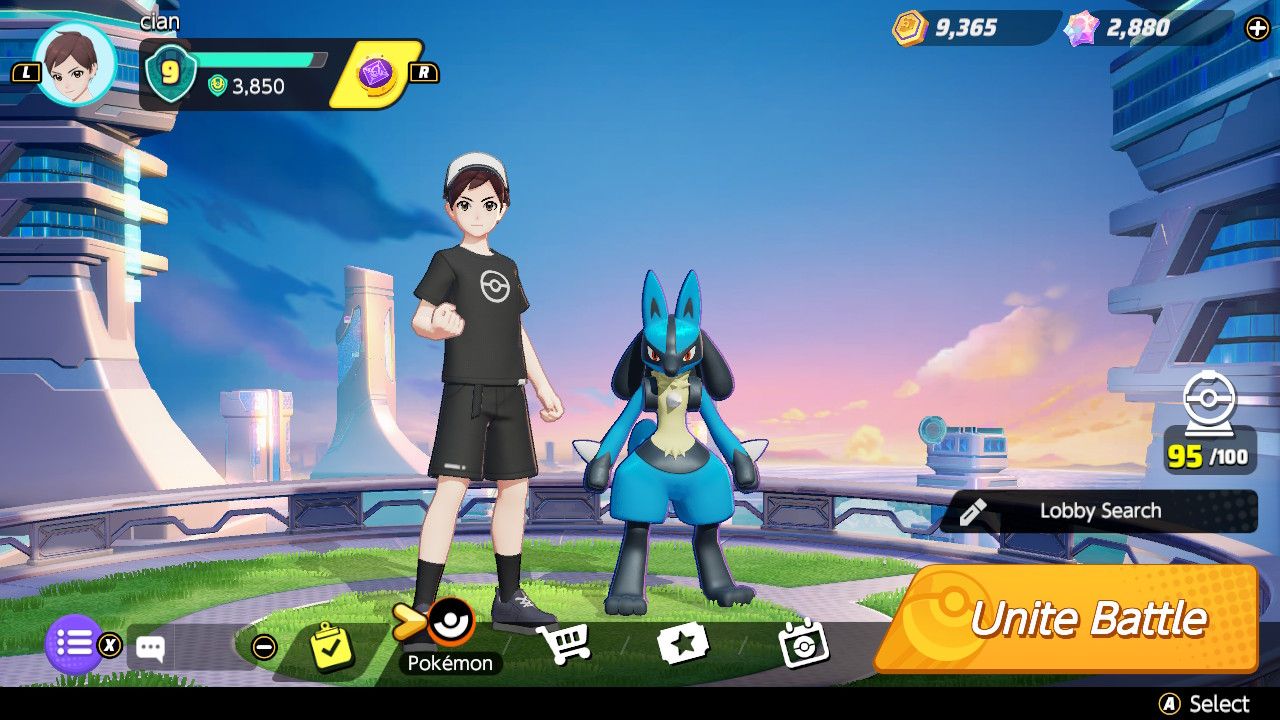
I’d like to take this opportunity to also speak to the game’s monetization. As a free-to-play title, it’s worth approaching Unite with a healthy amount of scepticism, particularly if you’re susceptible to spending. While I personally take no issue with Unite’s microtransaction structure, it would be remiss to review the game without presenting an honest breakdown of how it all works.
Unite’s economy is separated into multiple in-game currencies, which, in general, is often done to make recognizing real-world value more difficult and, by extension, easier to rationalize exchanging. Learning what each and every little symbol is actually used for takes a while, and there were several times I thought, “Oh, I have enough for this now!” only to realize that I was, in fact, broke.
Still, Unite is not pay-to-win, regardless of what some people online might purport. The only value real money has is tied to cosmetic items that have no impact on moment-to-moment play. Held items can be enhanced in order to increase their effectiveness, although item enhancement materials are essentially thrown at you for completing challenges, opening in-game loot boxes using a currency called Energy, and ranking up. It’s easy to see how prevalent microtransactions are from the perspective of just staring endlessly at the homescreen’s UI, but when it comes to making the game fair for people regardless of monetary input, I think Unite is pretty innocuous compared to some of the other live-service titles on the market right now.
Pokemon Unite is weird. It both feels everything and nothing like Pokemon and nothing and everything like a MOBA. It’s not necessarily a balanced meeting point between these two ostensibly incomparable concepts – instead, it’s its own thing entirely. And, for the most part, this new, strange, messy hybrid works. Its misunderstanding of what makes it special in the first place is an unignorable aspect of an otherwise remarkable effort, and there will be people out there who are turned off by the overbearing presence of microtransactions, even if they don’t technically make the game pay-to-win.
Me, though? I have my nitpicks, although I’m not too proud to admit that they are drastically outweighed by my predilections. Pokemon Unite is a game I can see myself playing for a long time – just add Blastoise to the roster already, eh? I’m dying to see what a Unite move with massive reptilian shoulder cannons looks like.

Score: 4/5
Next: Pokemon Unite Complete Guide And Walkthrough
